Best Time to Visit Morocco by Region and Activity
Best Time to Visit Morocco
Imagine standing on a dune where temperatures swing from frosty 0°C nights to scorching 50°C days – all within the same week. This isn’t sci-fi; it’s Morocco’s Sahara, where weather extremes define adventure. But here’s the secret: you don’t need to brave Martian conditions to enjoy this North African gem.
From coastal breezes in Essaouira to snow-capped Atlas Mountain trails, your ideal trip depends entirely on what you want to experience. Love festivals? Spring brings vibrant music celebrations. Prefer quiet markets? Winter months offer thinner crowds in Marrakech’s souks.
This guide cuts through the guesswork. We’ll match regions and activities to temperatures and seasons, whether you’re chasing autumn surf in Taghazout or spring wildflowers in the Ourika Valley. You’ll learn how to dodge the heat in Fes’ medina or catch Chefchaouen’s blue-washed streets without the summer tourist rush.
Key Takeaways
- Morocco’s climate varies wildly – coastal areas stay mild while deserts and mountains see extremes
- October-April offers comfortable exploration weather for most regions
- Winter (Dec-Feb) is prime for desert tours without intense heat
- Spring (Mar-May) balances cultural festivals with pleasant city temperatures
- Summer travellers should target breezy coasts or elevated mountain towns
- Crowd levels drop significantly outside peak European holiday periods
Understanding Morocco’s Climate and Seasonal Highlights
From frost-kissed Atlas peaks to sun-baked Sahara sands, Morocco’s weather dances to its own rhythm. Coastal towns might enjoy spring-like warmth while mountain passes shudder under snowfall – all in the same week. This climatic diversity means your experience shifts dramatically based on when and where you travel.
Weather Whispers: Reading Morocco’s Skies
Winter (December-February) brings crisp mornings and occasional snow to the High Atlas, while Essaouira’s coast stays mild enough for sunset strolls. Desert days hover around 20°C, but nights plunge to near-freezing. Come March, almond blossoms signal spring’s arrival – cities like Fes buzz with festivals before summer’s heat intensifies.
Seasonal Shape-Shifting
Summer transforms the landscape: coastal fog lifts by noon, mountain trails dry out, and Sahara thermometers spike past 40°C. Yet evenings remain surprisingly cool – pack layers even in July. Long daylight hours (up to 14 hours in June) mean more exploring time, but crowds swell at popular sites.
| Region | Winter (Dec-Feb) | Summer (Jun-Aug) |
|---|---|---|
| Coastal Areas | 12-18°C, occasional rain | 22-28°C, ocean breezes |
| High Atlas | -5 to 10°C, snow above 2,000m | 15-25°C, dry trails |
| Sahara Desert | 18°C day / 5°C night | 45°C day / 20°C night |
Smart travelers watch seasonal patterns like hawks. Visiting in April or October often strikes the perfect balance – comfortable city exploring, manageable desert temperatures, and thinner tourist crowds.
Exploring Regional Variations: From Coastal Cities to the Atlas Mountains
Picture strolling through a seaside medina where ocean mist kisses your face, then driving inland to where sunbaked earth stretches endlessly. Morocco’s landscapes shift faster than a desert mirage, each region offering distinct adventures shaped by its climate.
Coastal Breezes and Urban Charm
Coastal hubs like Essaouira and Rabat enjoy mild temperatures year-round. Winter days hover around 18°C – perfect for exploring Casablanca’s Art Deco architecture or Tetouan’s whitewashed alleys. Summer brings 25°C warmth to beaches without the heat that scorches inland areas.
Head south to Agadir, where golden sands stay crowd-free outside peak months. Contrast this with Marrakesh, just 150 miles east, where summer thermometers regularly hit 38°C. Coastal fog burns off by midday, revealing sunny afternoons ideal for seafood lunches in fishing ports.
Mountain Majesty and Desert Drama
The High Atlas rewards hikers with wildflower-carpeted trails from April to June. Villages like Imlil serve as gateways to Toubkal Peak, where snow lingers into May. Further south, the Anti-Atlas bursts with almond blossoms each spring – a secret season few tourists witness.
Meanwhile, the Sahara Desert plays by different rules. Daytime temperatures here can swing 30°C between seasons. Winter brings crisp 20°C days ideal for camel treks, while summer transforms dunes into oven-hot landscapes best avoided by midday.
Understanding these contrasts helps craft smarter itineraries. Pair breezy mornings in coastal cities with afternoon mountain hikes or evening desert stargazing. Your trip becomes a climate-controlled mosaic of Morocco’s most striking sites.
Best Time to Visit Morocco: Activity-Based Guide
Picture yourself sipping mint tea in a desert camp as stars pierce the inky Sahara sky. Morocco transforms into different playgrounds depending on the season – your challenge? Pairing dreams with the right weather.
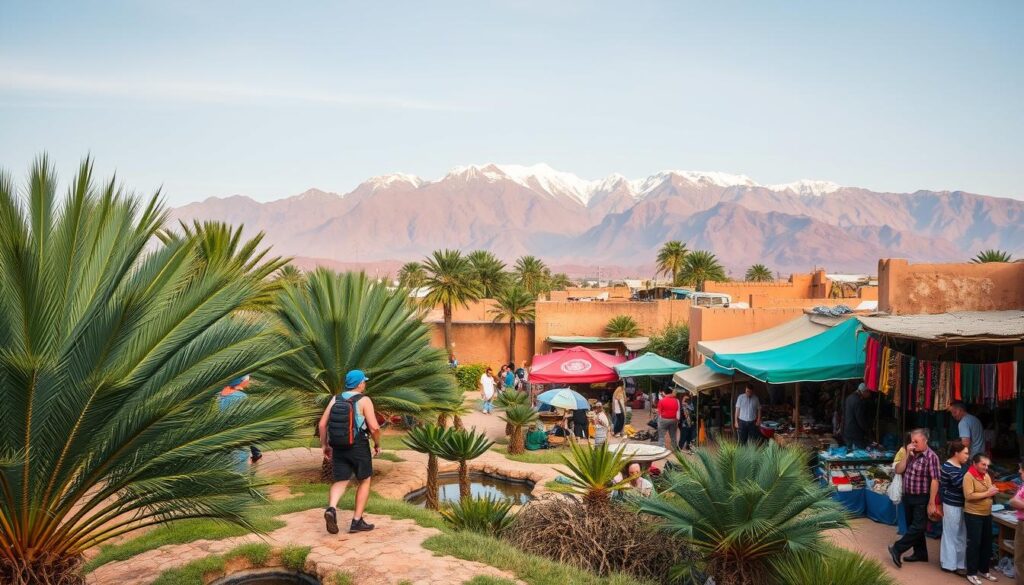
Dune Surfing and Mountain Trails
May and October unlock the Sahara’s magic. Daytime temperatures hover around 30°C – warm enough for camel treks but cool enough for comfortable nights. Local guides joke, “Sand doesn’t melt your shoes these months” – a nod to summer’s brutal 45°C heat.
Up in the Atlas Mountains, spring thaw creates perfect trekking conditions. Trails like the Aït Bouguemez Valley burst with wildflowers through June. Pack layers – mountain weather shifts faster than a market trader’s prices.
Festival Beats and Street Feasts
From May’s Fez Sacred Music Festival to September’s Marrakech Biennale, cultural pulses quicken post-spring. Essaouira’s Gnaoua Festival in June mixes ocean breezes with hypnotic rhythms. Pro tip: Book riads near festival venues – walking through summer heat wears thin quickly.
| Activity | Best Months | Conditions | Pro Tip |
|---|---|---|---|
| Desert Camping | May, October | 30°C days / 15°C nights | Pre-book luxury camps |
| Mountain Hiking | April-June | 12-25°C, dry trails | Hire local mule guides |
| Festival Hopping | May-September | 22-35°C, lively crowds | Secure tickets 3 months ahead |
Whether chasing adrenaline or culture, timing shapes your experience. Desert explorers avoid August’s furnace-like conditions, while festival lovers dodge April’s occasional rain showers. Your perfect trip waits – you just need to sync it with Morocco’s seasonal rhythms.
Optimal Months for Specific Experiences
Imagine sipping mint tea in Marrakesh’s medina without elbowing through crowds. Timing transforms ordinary moments into magic here. Coastal breezes and mountain trails reveal their secrets when you sync your trip with Morocco’s sweet-spot months.

City Exploration and Cultural Sites
March to May and September to October gift you golden weather for urban adventures. Essaouira’s fortified walls feel refreshing with 22°C sea air, while Fes’ labyrinthine alleys stay shaded from heat. Locals whisper, “Spring paints our cities patient” – fewer tourists mean unhurried haggling in souks and empty photo ops at Hassan II Mosque.
Historic sites like Aït Benhaddou glow under soft autumn light. Mornings stay crisp for exploring Volubilis’ Roman ruins, while afternoons invite café breaks without summer’s sweat. Pack light layers – desert winds can sneak into Marrakesh’s plazas after sunset.
Seasonal Outdoor Activities and Hiking
The Atlas Mountains become a trekker’s paradise when snowmelt feeds valleys April through June. Guides recommend September routes too – summer’s heat fades, leaving trails dry and skies clear. Toubkal Base Camp sees 18°C days perfect for summit attempts without icy surprises.
| Activity | Prime Months | Local Tip |
|---|---|---|
| Medina Exploration | Mar-May, Sep-Oct | Start early to beat midday sun |
| Mountain Trekking | Apr-Jun, Sep | Rent poles for rocky descents |
| Coastal Walks | Oct-Nov | Watch for migrating birds |
Balance city days with nature escapes. Morning museum visits pair perfectly with afternoon Ourika Valley hikes. Locals joke, “We live by two clocks – sun and season.” Sync yours, and Morocco unfolds like a storybook.
Planning Your Morocco Itinerary: Tips for Different Weather Conditions
Navigating Morocco’s weather feels like mastering a three-dimensional chess game. Coastal fog, mountain frost, and desert heat can all occur simultaneously across the country. Smart travelers adapt by treating each region’s climate as a separate puzzle piece.
Heat Management and Daylight Hacks
Inland cities like Marrakesh hit 40°C during July and August. Beat the heat by scheduling indoor activities like museum visits between 11 AM and 3 PM. Coastal towns offer natural relief – Essaouira’s Atlantic breezes keep summer days around 25°C.
Desert explorers should time camel treks for early mornings. Pack electrolyte powders – guides swear by them for adventure days. “The Sahara gives you two sunrises,” locals joke – one actual, one when you finally find shade.
Regional Climate Playbook
The High Atlas demands layered clothing year-round. April hikers might start in thermal leggings but shed layers by noon. Winter trekkers should pack microspikes for icy trails above 2,500m.
| Region | Essential Gear | Timing Tip |
|---|---|---|
| Coastal Areas | Windbreaker, sunscreen | Explore beaches before noon fog rolls in |
| Sahara Desert | Headscarf, portable fan | Schedule drives between 6-10 AM |
| High Atlas | Moisture-wicking layers | Start hikes by 7 AM to avoid afternoon storms |
Coastal winters surprise visitors with chilly evenings. Many riads now offer central heating – ask when booking. For mountain trekking, hire guides who monitor real-time weather updates via satellite phones.
Remember: Morocco’s seasonal shifts create opportunities. Swap sweltering city afternoons for waterfall swims in Ourika Valley. Let each region’s climate dictate your daily rhythm, not the clock.
Tailor-Made Travel: When to Visit for Unique Events and Festivals
The rhythm of Moroccan festivals pulses through crowded medinas and mountain villages, offering travelers unforgettable cultural snapshots. Timing your trip around these events transforms standard sightseeing into vibrant experiences – think drum circles under starlit skies or centuries-old harvest celebrations.
Seasonal Festivals and Celebrations
May sparks the Fez Festival of World Sacred Music, where ancient courtyards echo with global melodies. June brings Essaouira’s Gnaoua Festival, blending ocean breezes with hypnotic rhythms. For quieter cultural gems, visit in January during Yennayer – Morocco’s Amazigh New Year features family feasts in the High Atlas without tourist crowds.
Considerations for Ramadan and Yennayer
Ramadan’s shifting dates dramatically affect travel. While daytime dining options shrink, evenings burst with festive energy after sunset. Many desert camps offer private iftar meals, letting you respectfully join local traditions. Book transport early – buses fill quickly before the holy month.
Practical Tips for Booking and Crowds
Secure festival accommodations 3-6 months advance, especially in Fes and Marrakesh. Travelers chasing both trekking and events should target April-May: mountain trails dry out while festival seasons begin. Local guides suggest, “Arrive two days early – you’ll beat price hikes and snag prime riad rooms.”
Conclusion
Morocco’s magic lies in its diversity – coastal breezes, mountain trails, and desert horizons each demand their own time to shine. Whether chasing activities in Marrakesh’s souks or stargazing in the desert, your experience hinges on aligning plans with regional weather patterns.
Coastal cities charm year-round, while mountain routes and Sahara adventures thrive in specific temperatures. Spring and autumn often strike the sweet spot, balancing comfortable exploration with vibrant local life. Winter reveals quieter medinas and crisp desert mornings perfect for photography.
Smart travelers cross-reference festival dates and seasonal shifts when booking. A little advance planning lets you surf Atlantic waves by noon and sip mint tea under Atlas Mountain stars by nightfall. Every season offers unique moments – your great time depends on what you want to discover.
Pack curiosity alongside sunscreen and layers. With this guide’s insights, you’re ready to craft a journey that turns Morocco’s climatic contrasts into your greatest advantage. Now’s the moment to match your dreams with the right time – adventure awaits.

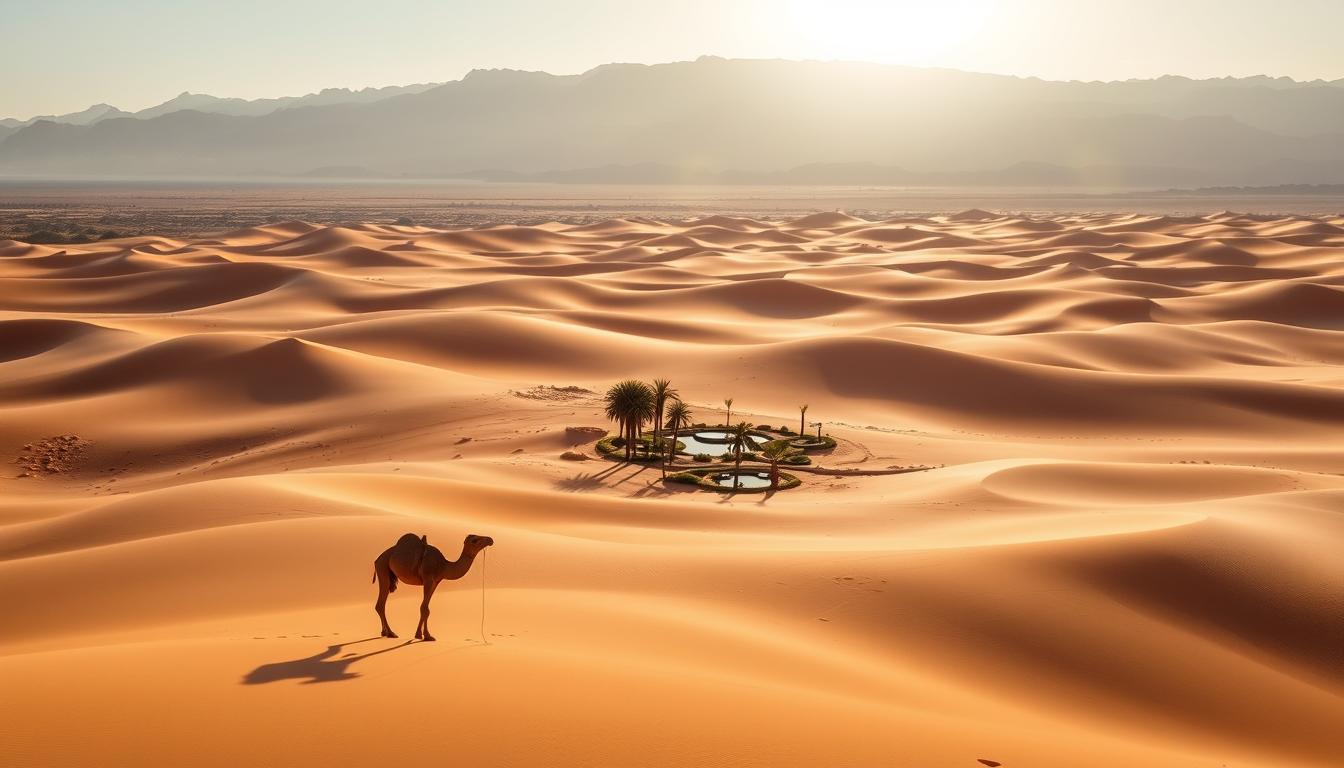
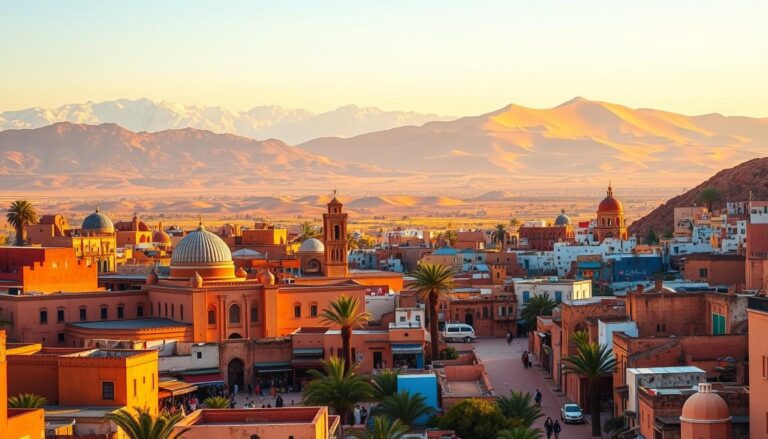
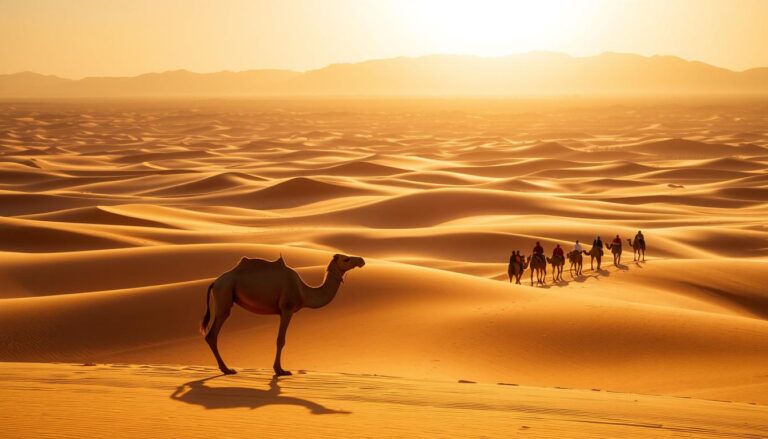
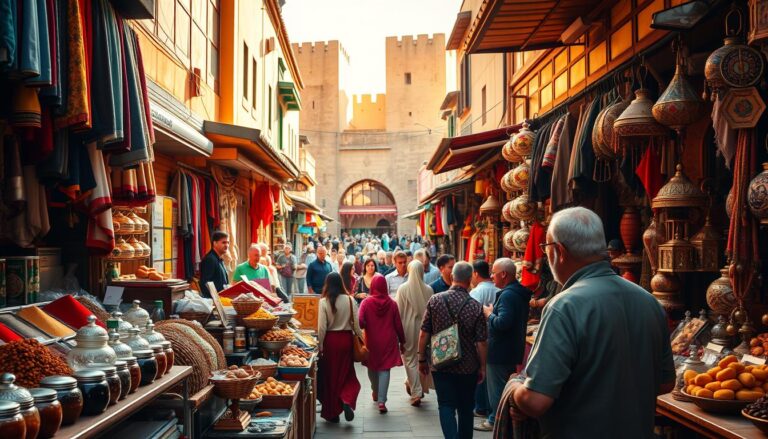

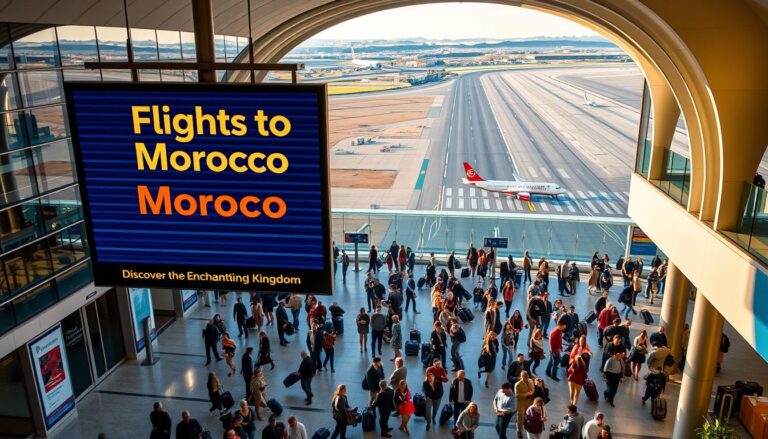
3 Comments